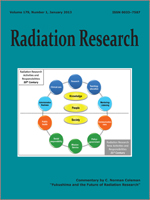Alteration of adhesion molecule expression on endothelial cells has a direct connection with ionizing radiation-induced atherosclerosis, which is an adverse effect observed after radiotherapy. However, minimal attention has been given to monocytes/macrophages role in atherosclerosis development, which are exposed to the radiation at the same time. Under flow conditions using a parallel plate flow chamber to mimic physiological shear stress, we demonstrate here that the avidity between very late antigen-4 (VLA-4) of RAW264.7 cells and its ligand vascular cell adhesion molecule-1 (VCAM-1), was increased after low dose (0.5 Gy) irradiation, but was reduced after higher dose (5 Gy) treatment of ionizing radiation despite the fact that the surface expression of VLA-4 was up-regulated at 5 Gy of ionizing radiation. Treating the cells with free radical scavenger N-acetylcysteine had no effect on VLA-4 expression, but did reduce the avidity between RAW264.7 cells and VCAM-1 to a similar level, independent of ionizing radiation dose. The effect of H2O2 treatment (from 1–100 μM) on RAW264.7 cell adhesion to VCAM-1 generated a similar bell-shaped graph as ionizing radiation. These results suggest that ionizing radiation regulates adhesive interactions between VLA-4 and VCAM-1, and that reactive oxygen species might function as a regulator, for this increased adhesiveness but with altered expression of integrin not play a major role.
How to translate text using browser tools
26 November 2012
The Role of ROS in Ionizing Radiation-Induced VLA-4 Mediated Adhesion of RAW264.7 Cells to VCAM-1 Under Flow Conditions
Ye Yuan,
Shin Hee Lee,
Shiyong Wu
ACCESS THE FULL ARTICLE

Radiation Research
Vol. 179 • No. 1
January 2013
Vol. 179 • No. 1
January 2013




